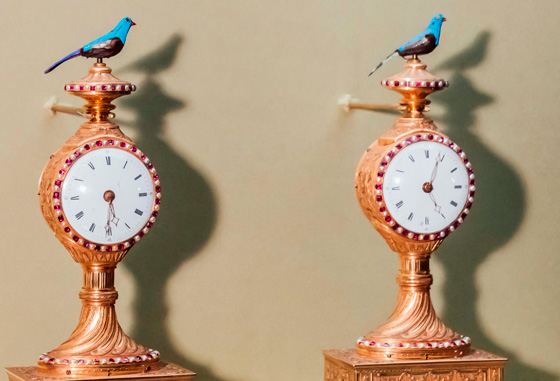
An exhibition entitled “Treasures of Time” is being held at the Hong Kong Science Museum until April 10th.
Stemming directly from the private collections of the Palace Museum of the Forbidden City – an extremely rare gesture on the part of this institution whose works are so important that they almost never leave their walls – a number of Jaquet-Droz clocks and automatons are presented to the public. This exhibition echoes the 280th anniversary of the Maison, which stretched throughout 2018.
The exhibition gives visitors the chance to discover exceptional pieces, including the unique Jaquet-Droz creations that were the jewels of the Qing dynasty’s imperial collections. Essential components of life at the 18th century Imperial Court, these clocks and automatons bear witness to a fruitful relationship that dates back centuries. Incidentally, Emperor Qianlong himself was the first to translate the name “Jaquet-Droz” into Mandarin Chinese, and his translation remains in use to this day.
The Jaquet-Droz workshop in London established ties with Canton as early as 1774. Its agents there quickly won the favour of the Imperial Court of China. As such, Jaquet-Droz became the first Swiss clockmaking brand to be imported into the Forbidden City. The emperors of the Qing dynasty amassed an exceptional collection of original Jaquet-Droz creations. They were charmed by the naturalist aesthetic of the pieces and the Art of Astonishment exhibited by automatons in the form of clocks, snuffboxes and pocket watches. Infusing its work with poetry and the art of watchmaking, Jaquet-Droz brought to life singing bird cages and automatons that enchanted the Emperor and his subjects. This long-standing friendship between Jaquet-Droz and China saw the export of more than 600 pieces over a single decade in the time of Pierre Jaquet-Droz.
“Treasures of Time” also offers new perspectives on the pioneering developments to be found in these early automatons. It is their mechanical genius from three centuries ago that warranted the attention of the Hong Kong Science Museum, the London Science Museum and the Palace Museum. These watches, clocks and automatons were ahead of their time, exhibiting a rare degree of creativity and technical skill. They animated for the first time the relationship between nature, man and, later, humanoid automatons. Each of these pieces brings to the present day a legacy of Jaquet-Droz craftsmanship that dates back to the 18th century; miniature painting, engraving, enamelling and gem-setting are techniques that keep the Art of Astonishment alive today.
February 07, 2019


 News
News